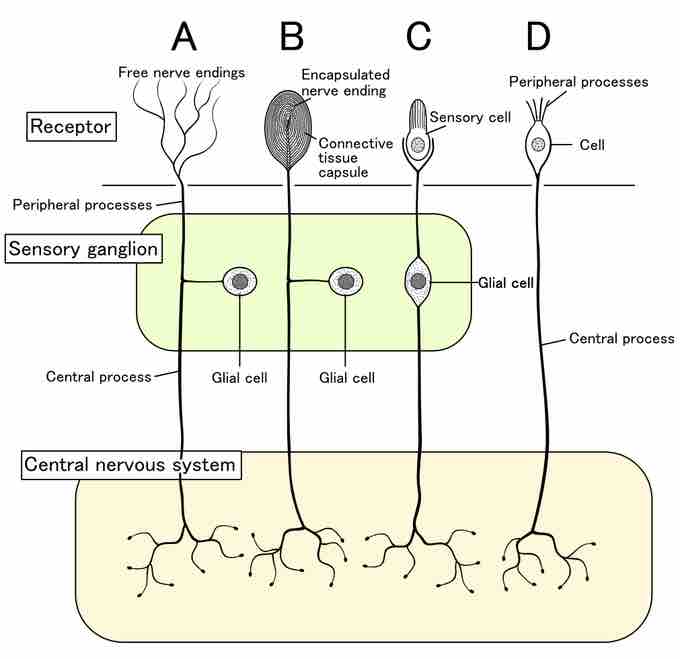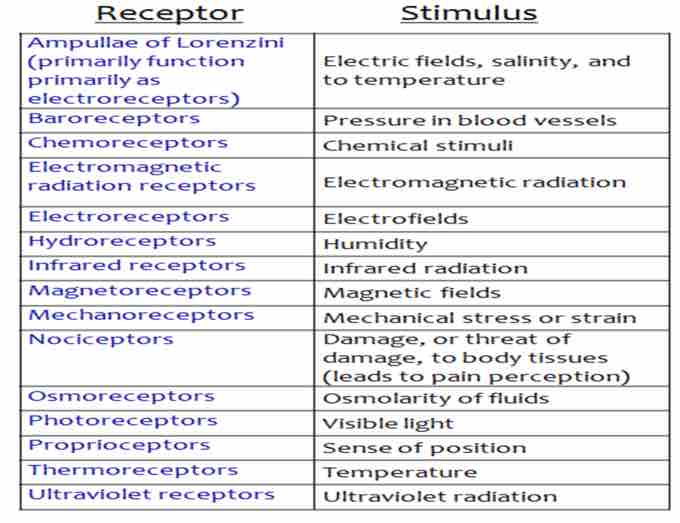Sensory receptors can be classified by the type of stimulus that generates a response in the receptor. Broadly, sensory receptors respond to one of four primary stimuli:
- Chemicals (chemoreceptors)
- Temperature (thermoreceptors)
- Pressure (mechanoreceptors)
- Light (photoreceptors)

A schematic of the classes of sensory receptors
Sensory receptor cells differ in terms of morphology, location, and stimulus.
All sensory receptors rely on one of these four capacities to detect changes in the environment, but may be tuned to detect specific characteristics of each to perform a specific sensory function. In some cases, the mechanism of action for a receptor is not clear. For example, hygroreceptors that respond to changes in humidity and osmoreceptors that respond to the osmolarity of fluids may do so via a mechanosensory mechanism or may detect a chemical characteristic of the environment.
Sensory receptors perform countless functions in our bodies. During vision, rod and cone photoreceptors respond to light intensity and color. During hearing, mechanoreceptors in hair cells of the inner ear detect vibrations conducted from the eardrum. During taste, sensory neurons in our taste buds detect chemical qualities of our foods including sweetness, bitterness, sourness, saltiness, and umami (savory taste). During smell, olfactory receptors recognize molecular features of wafting odors. During touch, mechanoreceptors in the skin and other tissues respond to variations in pressure.
Classification of Sensory Receptors
Adequate Stimulus
Adequate stimulus can be used to classify sensory receptors. A sensory receptor's adequate stimulus is the stimulus modality for which it possesses the adequate sensory transduction apparatus.

Sensory receptor table
Sensory receptors with corresponding stimuli to which they respond.
Location
Sensory receptors can be classified by location:
- Cutaneous receptors are sensory receptors found in the dermis or epidermis.
- Muscle spindles contain mechanoreceptors that detect stretch in muscles.
Morphology
Somatic sensory receptors near the surface of the skin can usually be divided into two groups based on morphology:
- Free nerve endings characterize the nociceptors and thermoreceptors.
- Encapsulated receptors consist of the remaining types of cutaneous receptors. Encapsulation exists for specialized functioning.
Rate of Adaptation
A tonic receptor is a sensory receptor that adapts slowly to a stimulus, while a phasic receptor is a sensory receptor that adapts rapidly to a stimulus.